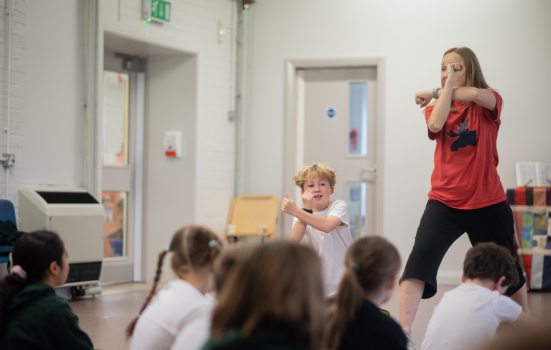Research led by a dance company found keeping pupils active in the classroom improved their maths and English learning.

Claire Griffiths
Movement-based education can contribute to improving children’s cognitive capacities during English and maths lessons, according to research by Lancashire-based dance and teaching provider Blue Moose Dance Company.
The research, titled Head to Toe, explored how moving the body during English and maths lessons can increase concentration, engagement and recall.
Dance artists Sarah Hall and Sarah Gough spent almost 300 hours working with more than 40 teachers and 460 Key Stage 2 primary school children, aged between 7 and 11, across a two-year period beginning in 2021, coinciding with many teachers reporting issues with pupil retention and recall amid the ongoing pandemic.
READ MORE:
Hall and Gough’s work involved developing lesson practices - such as ‘Odds and Evens Groovy Moves’ for maths and ‘Preposition Hand Jives’ for English - as well as delivering whole school teacher training days and additional development sessions.
“We have drawn upon the wealth of expertise from all sides to test and implement teaching that allowed all involved to gain a stronger understanding of arts-based learning and articulate and advocate for the practice being embedded in everyday teaching,” Gough said.
According to research outcomes shared by Blue Moose Dance Company, the project helped to realise the varied ways learning can be designed and experienced, that experiments and playfulness are essential to learning, and gave an enhanced awareness of the value of decision making, community building and cohesive group work.
The research also found that alternative learning practices were advantageous for pupils with special educational needs and children who were already meeting age-related expectations, helping them to explore other skills, including leadership.
Enhanced learning
Testimonials from teachers said the research “ignited children’s curiosity”, with some hoping to embrace the practice across their entire school curriculum.
“Watching the pupils learning in this way really brought home the powerful impact movement based and physical activity can have in improving and supporting pupils’ ability in retaining and recalling key vocabulary and subject knowledge,” one headteacher said.
Blue Moose Dance Company also says the project supported a series of emerging outcomes, including that arts organisations are gaining more evidence, acknowledgement and increased reputation of the positive impact of arts-based learning across school settings.
Another emerging outcome says the project is producing more well-rounded practitioners with a deeper understanding of nuances of school practice, which can be passed on to the wider artistic team within and beyond an organisation.
Elaine Speight, Co-Director of the Institute of Creativity, Communities & Culture at University of Central Lancashire said the findings “demonstrate the power of creativity to enhance all aspects of our lives”.
“It’s wonderful to see how Blue Moose Dance Company’s innovation, combined with the expertise and enthusiasm of teachers, has had such a positive and profound effect upon the education and wellbeing of children across Lancashire,” Speight added.
“From Head to Toe proves that, rather than an add on, the arts in all their forms are a strategic and vital resource.”




